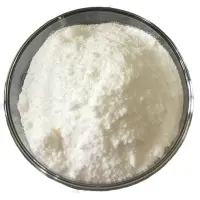-
Categories
-
Pharmaceutical Intermediates
-
Active Pharmaceutical Ingredients
-
Food Additives
- Industrial Coatings
- Agrochemicals
- Dyes and Pigments
- Surfactant
- Flavors and Fragrances
- Chemical Reagents
- Catalyst and Auxiliary
- Natural Products
- Inorganic Chemistry
-
Organic Chemistry
-
Biochemical Engineering
- Analytical Chemistry
-
Cosmetic Ingredient
- Water Treatment Chemical
-
Pharmaceutical Intermediates
Promotion
ECHEMI Mall
Wholesale
Weekly Price
Exhibition
News
-
Trade Service
*For medical professionals only
These key clinical questions have been answered by consensus!
What kind of disease is dermatomyositis? What ancillary tests do patients with dermatomyositis need to be done? What is the significance of myositis antibodies in the diagnosis and treatment of dermatomyositis? How is dermatomyositis diagnosed and clinically myopathic dermatomyositis diagnosed? In the treatment of dermatomyositis, how to use hormones and how to reduce the amount? What are the points to note in the treatment of dermatomyositis combined with interstitial lung disease and malignancy?
Recently, the "Chinese Expert Consensus on the Diagnosis and Treatment of Dermatomyositis in Adults" was officially published online in the Chinese Journal of Dermatology, answering these key clinical questions
.
The guideline was co-authored by Professor Jin Hongzhong of the Department of Dermatology of Peking Union Medical College Hospital and Professor Lu Qianjin of the Dermatology Hospital of the Chinese Academy of Medical Sciences, and was co-authored and revised by 25 experts in related fields from many hospitals in China
.
The consensus is based on the relevant literature and expert recommendations for the diagnosis and treatment of adult dermatomyositis at home and abroad, and is used as a reference
for dermatologists at all levels and other related departments.
Figure 1: This consensus was officially published in the Chinese Journal of Dermatology, dermatomyositis is an idiopathic inflammatory myopathy that can present with typical skin lesions, proximal muscle weakness, and multi-organ involvement,
as well as malignant tumors
.
This consensus classifies the cutaneous manifestations of dermatomyositis:
(1) specific cutaneous manifestations, including Heliotrope sign, Gottron papules, and Gottron sign;
(2) Other skin manifestations with high diagnostic value, including shawl sign, V sign, holster sign, nail wrinkle changes, and head lesions;
(3) Rare skin manifestations, such as vesicular bullous lesions, skin necrosis, skin ulcers, skin vasculitis, skin calcification, "mechanic hand", flagellated erythema, follicular hyperkeratosis, panniculitis, erythroderma, etc
.
Ancillary examinations for dermatomyositis mainly include:
(1) general laboratory tests;
(2) muscle enzyme spectroscopy;
(3) myositis-specific antibodies and myositis-related antibodies;
(4) Electromyography;
(5) Muscle MRI and muscle ultrasound;
(6) Skin pathology and muscle pathology
.
This consensus introduces the significance, precautions and common positive manifestations of various auxiliary examinations of dermatomyositis, especially the significance of common myositis-specific antibodies in the diagnosis and treatment of adult dermatomyositis, such as anti-TIF1-γ antibody and anti-NXP-2 antibody are prone to concomitant malignant tumors.
Anti-MDA-5 antibodies are associated with clinical amyopathic dermatomyositis and interstitial lung diseases (especially rapidly progressive interstitial lung diseases
).
In addition, the consensus recommends ancillary tests for lung and cardiac involvement in dermatomyositis, and tumor screening
.
In terms of the diagnosis of dermatomyositis, the consensus recommends that the diagnosis of dermatomyositis be diagnosed by reference to the diagnostic criteria proposed by Bohan/Peter in 1975 and the EULAR/ACR classification criteria for idiopathic inflammatory myopathy in adults in 2017.
The diagnosis of clinical myopathic dermatomyositis is defined: some patients may have only the typical cutaneous manifestations of dermatomyositis without myasthenia, and the histopathology of the lesions is consistent with dermatomyositis
.
If such patients have a longer course of disease than 6 months, do not receive immunosuppressive therapy for more than 2 consecutive months in the first 6 months, and do not use drugs that can cause dermatomyositis-like skin lesions, such as statin lipid-lowering drugs and hydroxyurea, they can be diagnosed as clinical amyopathic dermatomyositis
.
Highlight 1: The first proposal for the use of glucocorticoids in dermatomyositis In terms of the treatment of dermatomyositis, this consensus for the first time gives suggestions for the application of glucocorticoids in the treatment of dermatomyositis, especially the suggestions for glucocorticoid reduction: after the disease is controlled, if the initial hormone dose of prednisone is 60~80 mg/d, it will be reduced by 10 mg every 2 weeks; At 40~60 mg, reduce 5 mg every 2 weeks; When 20~40 mg, reduce 5 mg per month; When 10~20 mg, reduce 2.
5 mg per month, and in the process of reduction, the speed
of reduction should be adjusted appropriately according to the changes in the patient's condition.
It is recommended to reduce to the lowest maintenance dose (often ≤ 10 mg/d)
for 12~18 months.
The drug selection for the treatment of adult dermatomyositis was summarized, including glucocorticoids, immunosuppressants, immunoglobulins, biological agents, JAK inhibitors, etc.
, and its usage, recommended dose, and possible adverse reactions or precautions were carefully explained
.
Highlight 2: Proposed tiered treatment regimen for clinical myopathic dermatomyositisAnother highlight of this consensus is that a tiered treatment plan for clinical amyopathic dermatomyositis is proposed: for mild lesions, only sunscreen and topical treatment can be used, and for moderate and severe skin lesions, Systemic therapy is added to this, preferably with mycophenolate or methotrexate
.
It was also emphasized that patients with clinically amyopathic dermatomyositis require close follow-up, as their condition may progress to classic dermatomyositis, which may also be accompanied by other systemic involvement or concomitant malignancy
.
In particular, it is important to note that they are more likely to have comorbid interstitial lung disease, particularly rapidly progressive interstitial lung disease
.
Dermatomyositis is a classic skin immune disease, but it is not only a skin disease, and its combined systemic involvement (interstitial lung disease, cardiac involvement, esophageal muscle involvement, etc.
) and malignant tumors should attract the attention
of dermatologists.
The consensus emphasizes that systemic involvement associated with dermatomyositis recommends related multidisciplinary diagnosis and treatment
in dermatology, rheumatology and immunology, respiratory, cardiology, etc.
This consensus also provides recommended treatment for systemic involvement of dermatomyositis and malignancy
.
At the end of the consensus, experts gave a treatment and management flow chart for adult dermatomyositis patients, which simply and clearly answered the key question
of how to treat dermatomyositis.
Figure 2: Flow chart
of treatment management of adult dermatomyositis patients This consensus was developed by the Department of Dermatology of Peking Union Medical College Hospital and took several years to complete.
In the process, experts carefully read a large number of domestic and foreign literature on dermatomyositis, held several meetings on consensus writing and revision, and finally met with your colleagues in the late autumn and early winter of 2022
.
As one of the important founders and pioneers in the field of dermatology in China, the Department of Dermatology of Peking Union Medical College Hospital adheres to the concept of "historical inheritance and benevolence" to provide high-quality diagnosis and treatment services
for patients with skin diseases.
Autoimmune skin disease is the dominant subspecialty of Union Dermatology, and the Department of Dermatology of Peking Union Medical College Hospital has led the formulation of a number of relevant guideline consensus and published a number of related research papers, which provide reference
for the diagnosis and treatment of autoimmune skin diseases in China 。 The Department of Dermatology of Peking Union Medical College Hospital is committed to the clinical and scientific research of psoriasis, pemphigus, pemphigoid, cutaneous lupus erythematosus, dermatomyositis, scleroderma and other skin immune diseases, and strives to be at the forefront of the national dermatology research field, and strive to bring hope and strength to patients with related diseases!
To view the consensus, please click "Read Original" in the lower left corner
References: [1] Dermatology Branch of China Association for the Promotion of International Exchange in Healthcare Care, National Clinical Research Center for Skin and Immune Diseases.Chinese expert consensus on the diagnosis and treatment of adult dermatomyositis(2022)[J].
Chinese Journal of Dermatology,2022,55(11):939-948.
doi:10.
35541/cjd.
20220420Original link:https://mp.
weixin.
qq.
com/s/6HPK_APbu-cSWuBgrKLqQQ
Where to see more rheumatology clinical knowledge?
Come to the "doctor's station" and take a look 👇







